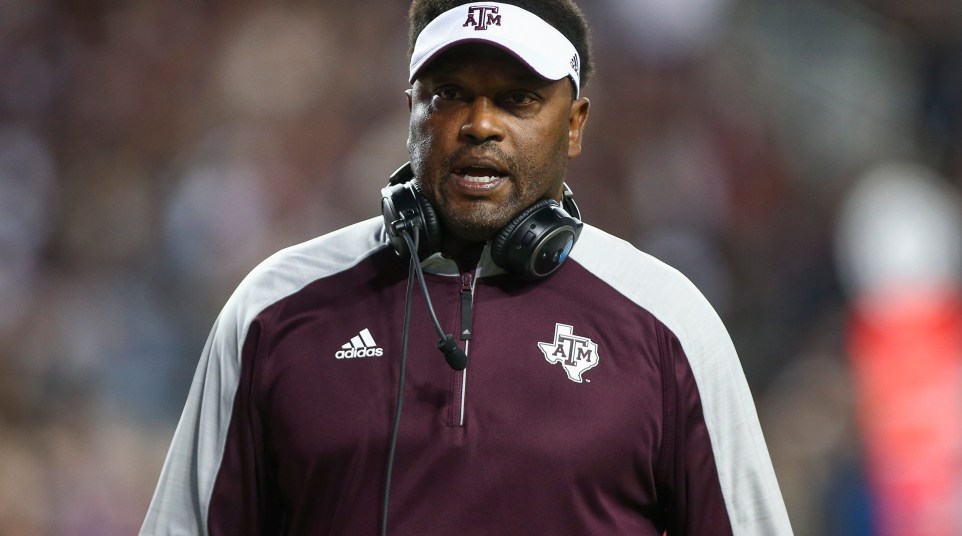
The SEC arms race: With $40 million pouring in to each program, no buyout is too big
Twenty-two years ago, at the end of the year, the Southeastern Conference officials met, tallied, figured, and divided the extra money in the conference’s ample pot among the (then) 12 member schools. Total amount: $40.5 million. So each school took home a little more than $3 million, and life went on.
Fast forward to earlier this month. As we reported, the SEC schools went through the same annual process, and took home $40.4 million. Each. From Alabama to Vanderbilt. Before boosters, ticket sales, aid, fund-raising campaigns, any of the traditional means for funding college sports.
Early in the 2016 season, after an 0-2 start, with coach Mark Stoops holding a losing record each of his previous three years at Kentucky, there were rumors about Stoops’ job security. The rumors never went very far, because, as the local media noted, Stoops had a buyout, after the 2016 season, of about $12 million. Our reporter calculated the buyout at just over $14 million during the 2016 season.
But Stoops was hardly alone. Buyout figures for at least 10 of the 14 SEC schools were north of $8.95 million. Only one school’s buyout figure was definitely lower; three more were unavailable.
With such monstrous buyout figures, could SEC teams really afford to replace a coach like Stoops ($14 million), Texas A&M’s Kevin Sumlin ($15.4 million), or Arkansas’ Bret Bielema ($15.4 million) at the first sign of trouble?
Actually, with the SEC cutting each program a check for $40 million, how could they not afford to replace a bad coach?
To put this in context, in 1995, if an SEC school would have had to sacrifice just under 40 percent of their allotted annual revenue to buy out a coach, that figure would have been about $1.2 million. Does that really sound unreasonable? Kentucky paid about half of that figure without hesitation to axe Bill Curry in 1996. Arkansas paid a similar amount to cut Danny Ford loose in 1997.
In more modern times, Auburn bought out Gene Chizik for $8.78 million. Florida anted up $6.3 million to get rid of Will Muschamp. The exact number of the buyout on Les Miles has never been clear, but figures from $9 million to $12 have been reported.
Let’s be blunt — being in the SEC is equivalent to hitting the athletic lottery — every year. Sure, some of that $40 million is funding non-revenue sports. But if you’re pretending that the vast majority of that $40 million isn’t pouring right back in to football — to escalating coaches salaries, to improved facilities, to stadium renovations — you’re kidding yourself.
And how can schools ruin this SEC lottery? Well, in theory, severe cheating could cause problems. But then look around the league and realize that hasn’t happened yet. Historically, what has happened is a team struggling to keep up. Which is why Sewanee is a tiny college in Tennessee and Tulane is an athletic also-ran. Both were in the SEC once. But they didn’t keep up.
And if the price for A&M to rid itself of Sumlin, or Ole Miss to jettison Hugh Freeze looks prohibitive, consider this — far more prohibitive would be the loss of that $40 million and growing annual paycheck. Stoops righted the ship at Kentucky — won seven games, went to a bowl, and got himself off the hot seat. Sumlin is still on the seat, and the number crunches are still tracking what it would cost in College Station for the Aggies to go in a new direction.
But don’t be surprised if an SEC school makes a hasty split with a head coach in 2017. Don’t be surprised if the headlines trumpet a large buyout paid to the now-former coach.
But also don’t be surprised if the underlying numbers reflect that impatience and wasting money still might be good business. Today’s tomato that doesn’t keep up the pace becomes tomorrow’s ketchup. And nobody wants to get squashed in today’s SEC.
